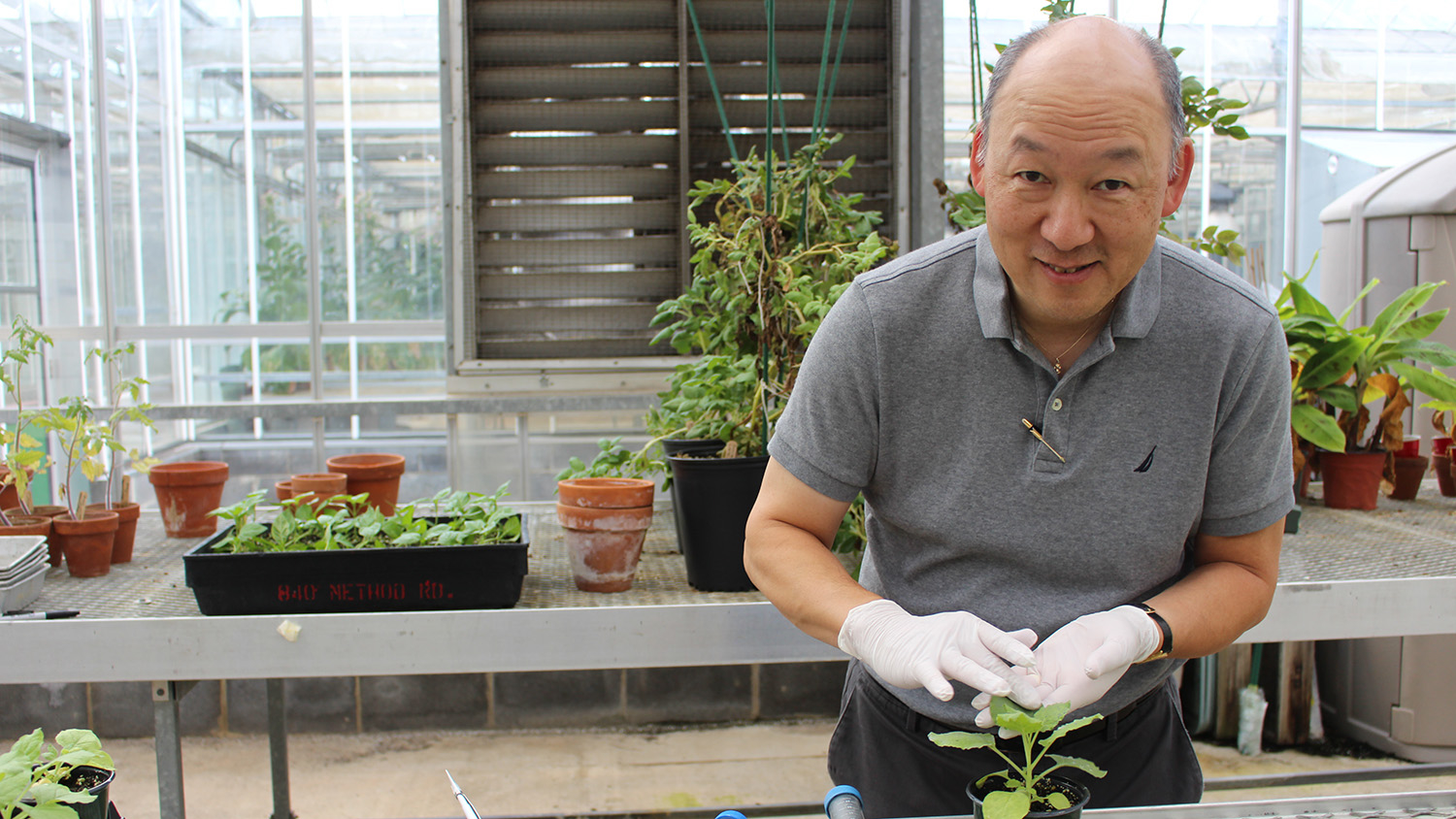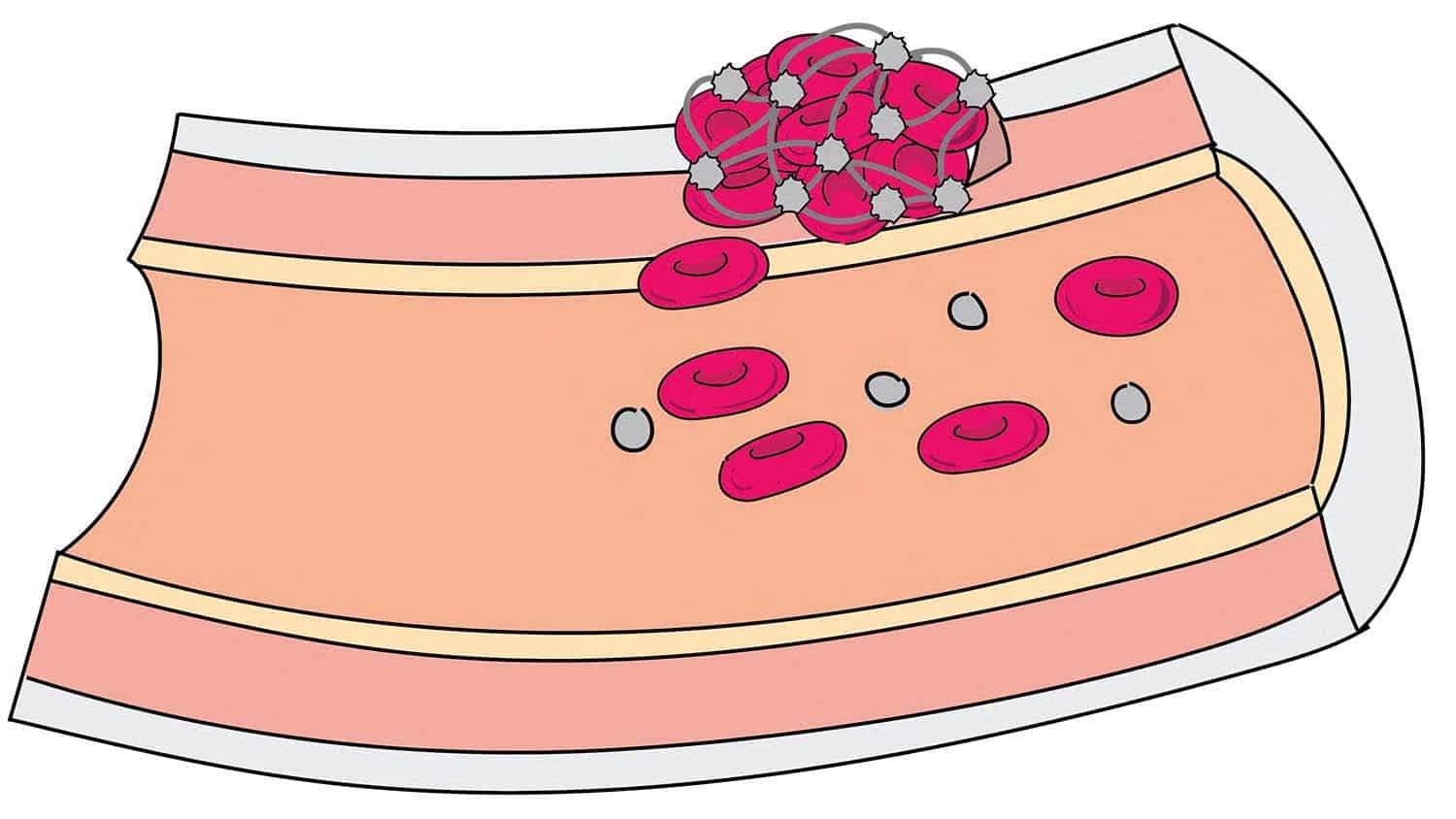On the Defensive

New research described in the Proceedings of the National Academy of Sciences finds that a plant-infecting virus folds part of its RNA into a complex knot-like structure – think of knotted spaghetti – that stops a plant cell’s defenses from chewing up the RNA. The viral RNA then produces a smaller RNA that doesn’t get translated into a protein.
Biochemists from the University of Colorado had seen a similar phenomenon previously in flaviviruses, which insects spread to people. In the flavivirus infections, the viral RNA also folded to stop the cellular enzyme from degrading it, and it produced a short noncoding RNA.
NC State University virologist Tim Sit worked with the Colorado team on the recent plant-related research. Taken together, the studies suggest that an ancient, basic biological process at work in flavivirus infection is also involved in a plant-infecting dianthovirus.
The smaller RNAs produced in the process seem to serve multiple, but different, roles during viral infection.
The fact that the pseudo-knot structure evolved independently in vastly different viruses suggests it may be widespread.
“The fact that you have a conserved structure in a human-infecting virus, as well as a plant-infecting virus, just goes to show that biology is biology,” Sit said. “It’s a cross-kingdom phenomenon, and there are probably more of these out there.”
Indeed, in the PNAS paper, the authors state that the research establishes xrRNAs – the RNAs that resist the action of the cellular XRN-1 enzyme – as a class of functional RNAs. They both seem to co-opt for their own purposes the molecular machinery the cell uses.
“What happens is the enzyme is chewing, chewing, chewing the RNA strand, and then it hits this pseudo-knot and stops,” Sit added. “You can think of it like sucking up a strand of spaghetti: If you suddenly have a ball in the spaghetti strand, you can’t get it into your mouth unless you open your mouth.
“That’s what this RNA does: It forms a structure that prevents the rest of the strand from being taken in,” Sit said.
In the lab, the Colorado scientists observed that certain mutations made the pseudo-knots fall apart. Without the structure in the RNA strand, the exoribonuclease was able to continue chewing through the strand.
When the scientists made mutations that restored the connection, “it brought back some of the functionality,” he added. “It’s not 100 percent, but it brought it back.”
“So it works in a test tube, but the problem then is, does it work in real life? You have to put it back in its natural setting to see if it is truly doing what you think it is,” Sit said.
That’s where NC State came in: “We made the mutations, put them in the model plant Nicotiana benthamiana, then extracted the RNA and sent it back to them for analysis,” he said. “From there they found that the mutations behaved in the plants just as they expected — the same way they had in a test tube.”
The research, Sit said, not only sheds light on a molecular mechanism at work during viral infections, it could have important implications in both medicine and agriculture.
“We never know where basic discoveries like this will lead. But who knows? Ten, 20 years from now, or even sooner,” Sit said, “someone may find ways to use the knowledge to protect plants and people from harmful viruses.”
Our research addresses grand challenges — and overcomes them.
This post was originally published in College of Agriculture and Life Sciences News.


